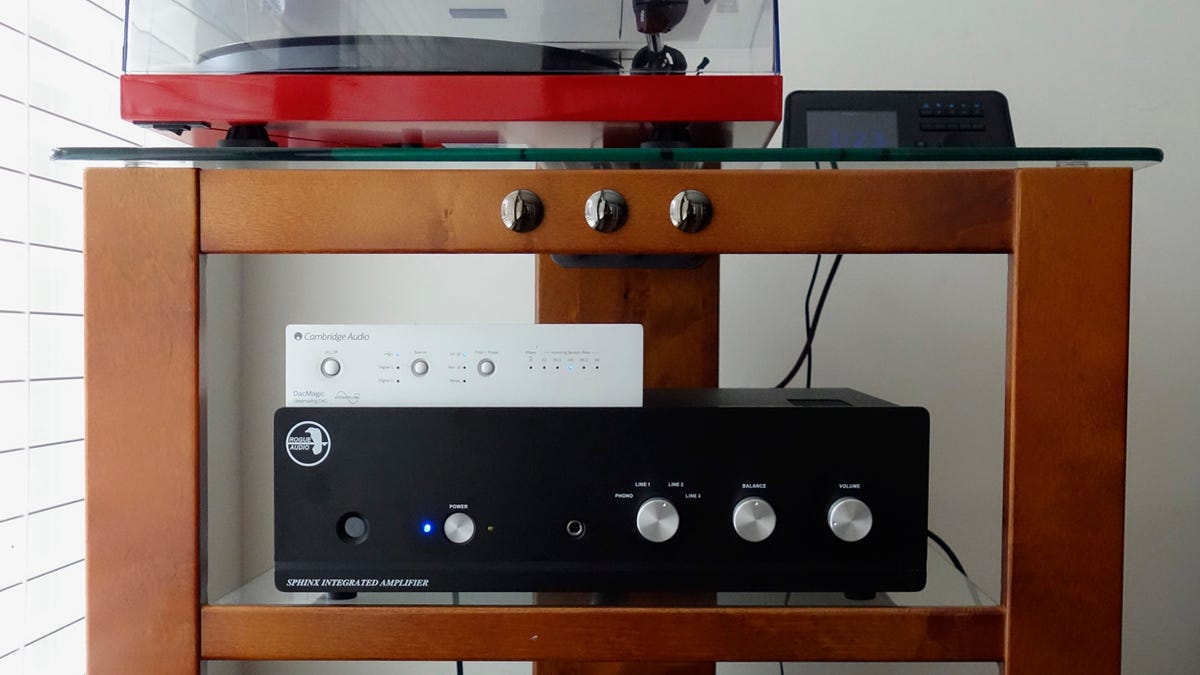How to radically improve the sound of your audio system: Add a subwoofer
There's a good chance a subwoofer might do the trick, and not just because subs add bass....

The sure-fire way to improve the sound of any audio system is to get better speakers, but if you like your speakers, adding a sub will be a profound upgrade.
My neighbors Sara and Kevin have a great audio system (more on that later), but it wasn't living up to his expectations, so he asked me to drop by their apartment. His prime complaint was that the speakers sounded too lean; there was not much oomph.
Kevin's right KEF LS-50 speaker, equipment rack, and the PSB sub tucked-in to the right of the rack.
Sara and Kevin are lucky that their living room is a lot bigger than average, it's 11.5 by 32 feet (3.5 by 9.8 meters), and the far end of the room from the speakers opens up to another room. That's a big space for a pair of small, stand-mounted speakers that typically work best in rooms half that size or even smaller. Worse yet, the left speaker is close to a glass door, and there are large windows directly behind the speakers, and all that glass "leaks" some of the speakers' bass output. I asked Kevin to move the speakers to the long wall, with the couch up against the opposite wall. I was pretty sure that arrangement would revive a good portion of the missing bass and midrange. Kevin wouldn't go for that -- he's using a pair of tiny Audioengine speakers and a sub for his TV on that wall, and he didn't want to reorient the room. The speakers had to stay where they were.
Here's a rundown of the stereo system: there's a Pro-Ject Carbon Debut turntable, Yamaha 8300 CD player, Cambridge Audio DacMagic digital converter, a Rogue Audio Sphinx V2 integrated stereo amplifier, and the speakers are KEF LS-50s. Great speakers, I know them well.
At that point I recommended a adding a subwoofer, and since we live in the same apartment building in Brooklyn, it was easy to haul my old PSB Alpha SubZero i up to Kevin and Sara's place. (I've written a separate blog on how to hook up a subwoofer to nearly any stereo audio system.)
After 15 minutes of fiddling with the Alpha SubZero i's volume and crossover controls, we achieved a smooth blend between the sub and LS-50s. Not only was there more bass, the midrange filled out as well. Male and female vocals sounded more natural. Kevin and Sara were really happy with the difference the Alpha SubZero i made. Kevin said the Alpha SubZero i "opened up the sound of the LS-50s." He felt the LS-50s were finally living up to their capabilities. Kevin noted that the sub made an even bigger difference when he played LPs, so he's playing more vinyl now.
Things worked out really well in this case, but some degree of sub and speaker matching is required. Adding bass is easy, fine-tuning the blend between speakers and the sub can take some time. If you're very aware of the sub's presence, if it's overwhelming the speakers' sound, the blend is off. You might have to keep tweaking the sub's controls as you play different recordings, but after a while you'll probably find a happy balance that works for nearly everything.
My PSB Alpha SubZero i sub is 10 years old, but I don't have much experience with PSB's newer subs. I strongly recommend checking out Hsu Research's extensive line of subs -- every one I've tried has been a winner.

